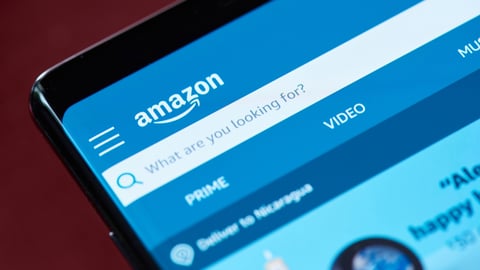Brands Selling on Amazon To Get New Analytics & Fulfillment Options
Amazon will provide third-party brands selling on its site with more digital tools and analytics to better understand the impact of their efforts, as well as more local fulfillment options.
Nearly 2 million small- and medium-sized businesses are classified by Amazon as third-party selling partners, and more than half of all products purchased on Amazon are sold by third-party sellers. Almost half a million of them are U.S. sellers, and the retailer said it added more than 100,000 brands to its U.S. store this year.
The company will make available a Search Analytics Dashboard next year, providing those registered in its Brand Registry with the ability to derive insights from product search performance. The anonymized data is designed to aid brands in better understanding consumer interests and choices for their products, in turn helping them optimize their listings, inform inventory planning, and plan product development.
[See also: Henkel Looks to Enhance Amazon Experience]
The tool will include two other dashboards: Catalog and Query Performance. Query Performance intends to help sellers understand top search terms associated with their products for better targeting keywords used in marketing campaigns. Brands will also be able to identify areas to expand their product portfolio based on customer interest.
The Catalog Performance dashboard, meanwhile, seeks to identify conversion issues or drop-off points where customer attention is lost, as well as analyze product price competitiveness and optimize marketing investments and inventory planning.
A second tool, Product Opportunity Explorer, is designed to help brands identify opportunities to launch new products and determine the likelihood they’ll gain traction with consumers. Currently in beta and expected to become available wide next year, it will provide detailed data on such things as search volume and growth, sales history, and pricing trends to help ID niches of emerging product opportunities.
Also in beta through early next year is a Customer Engagement tool that brands can leverage to launch email marketing campaigns raising awareness of new products.
[See also: The Tech SMBs Need to Compete with Big Brands]
Finally, the retailer also launched new services to provide third-party sellers with more fulfillment options. Amazon Local Selling enables them to provide consumers with designated areas for local in-store, same-day pickup.
Shoppers can select in-store pickup after placing an order and will receive a notification when it’s ready that day. They also have the option to select local delivery by the seller.
The service is now available from such retailers as Sears Hometown Store, Best Buy, Adorama, DataVision and others, with other retailers being encouraged by Amazon to apply to the program. Participating retailers will have the ability to add on such services as installation and product assembly to orders they fulfill.






